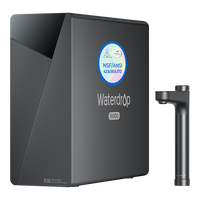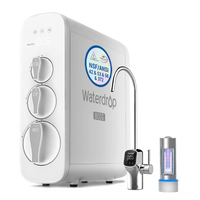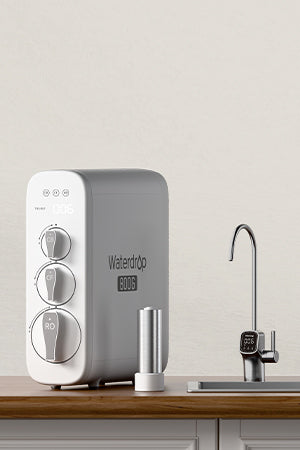The Wolf Administration was able to receive preliminary approval of a proposed drinking water regulation that would set limits for two highly toxic chemicals. The Environmental Quality Board approved the rule at 14 parts per trillion, and 18 ppm respectively in submissions from state agencies over this summer.
The state Department of Environmental Protection has found that one third of the 400+ sites tested across Pennsylvania are contaminated with a harmful chemical. The federal government ordered public water systems in 2013 to conduct these screenings, and more than 100 communities have been tested so far for this substance. Both chemicals belong to the group of perfluoroalkyl and polyfluoroalkyl substances, known collectively as PFAS, and which are used in products like nonstick cookware, carpets, firefighting foam and fast-food wrappers.
What Are PFAS?
PFAS, which is short for Per- and Polyfluorinated substances, is a group of human-made chemicals resistant to water, oil and heat. These chemicals have been widely used in various industries and commercial applications since companies manufactured them by the mid-twentieth century.
PFAS chemicals are commonly used in life and exist in products like water-resistant clothing and shoes, non-stick cookware, stain-resistant carpeting, food packaging, polishes, paints, etc.
PFOA and PFOS
There are two PFAS that have been phased out of use due to their dangers: PFOA (perfluorooctanoic acid) and PFOS (perfluorooctane sulfonic acid). These chemicals were traditionally used in products such as nonstick kitchenware, cleaning products , stain repellants food packaging water resistant clothing .
Today there is growing awareness about how dangerous these compounds can be when they're released into our environment - this includes air pollution as well as exposure through drinking water sources near industrial factories which produce them for example at home!
How Do PFAS Contaminate Water?
PFAS may find its way into the water in a number of ways. For instance, if you use products containing PFAS or eat foods and drink water contaminated with these chemicals.
Residents of areas close to factories releasing PFAS chemicals as byproducts are also at the risk of PFAS water contamination. The same goes for neighborhoods around airports, oil refineries, and military bases. In these areas, the PFOA or PFOS used in fire foam contaminate the water via surface runoff.
But the big question is, is it possible to remove these chemicals completely from the water supply before it gets to your home? Maybe not. According to
2016 research on PFAS, over 6 million Americans have their drinking water contaminated with PFAS levels higher than the public health recommendations of the EPA.
How Can PFAS Affect People’s Health?
With characteristics that do not break down easily, the PFAS are known as the “forever chemicals ” that would persist and accumulate in our environment, gradually go in and build up into human bodies, causing potential risks to our health.
According to the EPA, exposure to certain PFAS compounds can increase cholesterol, impact infant birth weights, affect our immune system, lead to diseases like cancer, thyroid hormone disruption, etc.
How to Remove PFAS in Water?
Drinking water from PFAS contaminated water supplies is one of the most common ways to get exposed to the chemicals.
Although the EPA and the states are taking actions to regulate and clean up PFAS chemicals from the drinking water and the environment, it is a great challenge and may take years and even decades of efforts to make progress.
How to protect ourselves from PFAS chemicals in drinking water?
Fortunately, many studies have shown that point-of-use filters with certain technologies can also effectively remove PFAS, making it possible for people to remove PFAS from their home water supply.
Activated Carbon Water Filter
Activated carbon treatment could work well for reducing PFAS in water. It is commonly used to adsorb natural organic compounds, taste and odor compounds, and synthetic organic chemicals in drinking water treatment systems.
If you check the water filter materials, you can easily find the activated carbon in
refrigerator filters, faucet-mounted filters, pitcher filters, and other filtration systems. According to the
studies by Duke University and N.C. State University, the activated carbon filters could remove 73 percent of PFAS contaminants on average.
Yet, they also found the activated-carbon filters’ effectiveness was inconsistent and unpredictable as the test result for each test varies a lot. The activated carbon filter is only effective in removing longer-chain PFAS but not the shorter-chain PFAS.
Reverse Osmosis Water Filter
High-pressure membranes like reverse osmosis use a partially permeable membrane to separate ions, unwanted molecules and larger particles, considered the most effective technologies to reduce PFAS in water.
Researchers from Duke University and N.C. State University tested 76 home water filtration systems for their efficiency in reducing PFAS. The study found that reverse osmosis works the best compared to other often used filter systems on the market, like refrigerator filter, pitcher style filter, whole-house filter, etc.
The RO system could reduce GenX and other PFAS by 94 percent or more. The
reverse osmosis membranes contain pores of 0.0001 microns that are only big enough to allow the passage of water molecules while blocking the PFAS and other contaminants.
Ion Exchange Treatment
The filter materials in this treatment are the small bead of resins. They attract the PFAS chemicals present in water magnetically during the passage of the water. These beads are not soluble in water, base, and acid because they consist of highly porous polymeric material. Therefore, treating your water with the ion exchange method gets rid of most PFAS chemicals. However, it costs more than the GAC.
Will Boiling Water Remove PFAS?
No, boiling water alone won’t remove PFOS and PFOA, as there’s no evaporation & condensation or filter process that could remove the chemical. In fact, boiling your water would just cause some of the water particles to evaporate, resulting in the same concentration of PFAS within a smaller batch of water.
Conclusion
There is still a long way to go for the final regulation and removal of those toxic chemicals from our living environment and drinking water at a federal and states level. As a citizen, it is important to know how to avoid getting exposed to those chemicals—— test your home drinking water regularly, and take solutions to safeguard your home drinking water from these worrying toxic chemicals.






































































